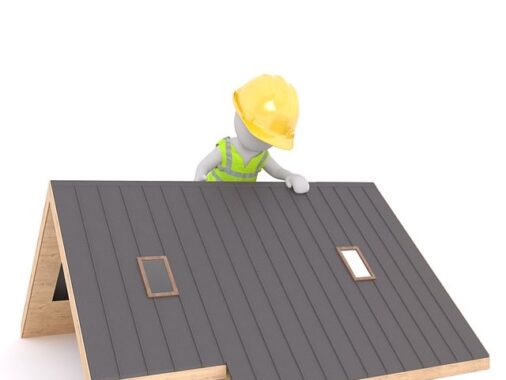Roofing issues are among the most significant problems homeowners face, often resulting in costly repairs if not addressed promptly. These issues can range from minor leaks to major structural damage, but understanding the most common problems and knowing how to fix them can save time, money, and further damage. In this article, we’ll dive deep into the common roofing problems and provide comprehensive solutions.
1. Roof Leaks
One of the most frequent roofing issues is leaking. Leaks can occur due to several factors such as damaged shingles, broken flashing, or improper roof installation. A leaking roof can lead to water damage, mold growth, and compromised structural integrity if left unchecked.
Causes of Roof Leaks:
- Broken or missing shingles: Shingles protect the underlying roof structure. When they are damaged or missing, moisture can easily seep into the home.
- Damaged flashing: Flashing seals roof joints and any protrusions like chimneys or skylights. When flashing is cracked or corroded, water can infiltrate these weak points.
- Clogged gutters: Gutters help divert water away from your roof. If they become clogged, water can pool and lead to leaks.
How to Fix Roof Leaks:
- Inspect and replace shingles: Damaged or missing shingles should be replaced immediately. Use roofing cement to secure them.
- Repair or replace flashing: Broken flashing can be repaired with roofing cement, or if extensively damaged, replaced entirely.
- Clean the gutters: Regular gutter cleaning ensures that water flows away from the roof properly, preventing leaks.
2. Ponding Water
Flat roofs are especially prone to ponding water, where water collects on the surface and doesn’t drain properly. This standing water can lead to premature aging of the roofing material, leaks, and even structural damage.
Causes of Ponding Water:
- Poor drainage systems: Inadequate sloping or a lack of drainage outlets can cause water to collect.
- Clogged drains or scuppers: Debris buildup can block water drainage, causing pooling.
- Deteriorated roofing materials: Aging or damaged roofing material can contribute to water pooling.
How to Fix Ponding Water:
- Improve drainage systems: Ensure the roof is sloped correctly and that gutters and drains are free of debris.
- Install roof drains: In cases of chronic ponding, installing additional drains can help divert water.
- Use roofing coatings: Applying a waterproof coating to the roof surface can help prevent further damage from ponding water.
3. Damaged or Worn Flashing
Flashing is a thin material, typically made of galvanized steel, installed to direct water away from critical areas such as chimneys, skylights, and vents. When flashing becomes damaged, it can lead to leaks and other roofing problems.
Causes of Flashing Damage:
- Weathering and corrosion: Exposure to the elements can cause flashing to wear out or corrode over time.
- Improper installation: Poorly installed flashing can leave gaps that allow water to seep through.
- Physical damage: Flashing can be damaged by debris, ice dams, or animals.
How to Fix Damaged Flashing:
- Replace corroded flashing: Use new, high-quality flashing materials that resist corrosion.
- Secure flashing with roofing cement: Ensure that all flashing is sealed properly and that there are no gaps.
- Install flashing correctly: Hire professionals to install flashing properly, ensuring water flows away from sensitive areas.
4. Cracked or Missing Shingles
Shingles act as the first line of defense for your roof. When they crack or go missing, the roof is left exposed to the elements, which can lead to leaks and structural damage.
Causes of Shingle Damage:
- High winds and storms: Severe weather conditions can lift shingles or rip them off the roof entirely.
- Aging: Over time, shingles can become brittle and crack, especially if they are made of materials that deteriorate with UV exposure.
- Poor installation: Shingles that were not installed properly may become loose or easily damaged.
How to Fix Cracked or Missing Shingles:
- Replace missing shingles: Use roofing nails to secure new shingles in place, ensuring proper alignment.
- Seal cracked shingles: Minor cracks can be sealed with roofing cement, but extensive damage requires full replacement.
- Inspect after storms: Regular inspections after storms can identify and address shingle damage before it leads to bigger issues.
5. Roof Ventilation Issues
Proper ventilation is critical to a roof’s health. Without adequate ventilation, heat and moisture can build up in the attic, leading to a range of problems such as mold growth, shingle deterioration, and increased energy costs.
Causes of Poor Ventilation:
- Blocked vents: Debris, birds’ nests, or insulation can block vents, restricting airflow.
- Inadequate number of vents: Homes with not enough vents may suffer from poor airflow, leading to excessive heat and moisture.
- Improper installation: If vents aren’t installed correctly, they won’t allow proper air circulation.
How to Fix Roof Ventilation Issues:
- Install additional vents: If the current system is inadequate, consider adding more vents to promote airflow.
- Clear blocked vents: Regularly inspect and remove any obstructions from vents.
- Upgrade ventilation system: In some cases, installing ridge or soffit vents may be necessary to improve the roof’s overall ventilation.
6. Sagging Roof
A sagging roof is a serious problem that typically indicates structural issues. It can be caused by a variety of factors and, if not addressed, may lead to a roof collapse.
Causes of Roof Sagging:
- Excessive weight: Heavy snow, ice, or even a poorly designed roof can cause the structure to sag.
- Water damage: Prolonged water exposure can weaken the roof structure, causing it to sag over time.
- Aging roof materials: As materials deteriorate, they may not provide adequate support, leading to sagging.
How to Fix a Sagging Roof:
- Reinforce roof structure: Install additional support beams or rafters to strengthen the roof.
- Remove excess weight: Clear off heavy snow or ice immediately to prevent further sagging.
- Replace damaged materials: In cases of severe damage, a full roof replacement may be necessary to fix the sagging issue.
7. Granule Loss
Asphalt shingles are coated with granules that protect them from the sun and weather. Over time, granules can wear off, leaving the shingles vulnerable to UV rays and water damage.
Causes of Granule Loss:
- Aging shingles: As shingles age, granule loss is inevitable.
- Storm damage: Hail or high winds can dislodge granules from the surface of shingles.
- Foot traffic: Walking on the roof can also cause granule loss.
How to Fix Granule Loss:
- Replace damaged shingles: If granule loss is extensive, it may be necessary to replace the affected shingles.
- Inspect regularly: Regularly check your roof for granule loss, especially after storms, to address problems early.
- Limit foot traffic: Avoid walking on the roof unless absolutely necessary, and use soft shoes when doing so.
8. Ice Dams
Ice dams form when snow melts on the upper parts of a roof and refreezes at the eaves, causing water to back up under the shingles. This can lead to leaks and structural damage.
Causes of Ice Dams:
- Poor insulation: Inadequate attic insulation allows heat to escape, melting the snow on the roof.
- Improper ventilation: Lack of ventilation contributes to uneven roof temperatures, causing ice dams to form.
- Clogged gutters: When gutters are clogged, they can trap water and allow ice to build up.
How to Fix Ice Dams:
- Improve attic insulation: Proper insulation will prevent heat from escaping and melting snow unevenly.
- Install heat cables: Heat cables can be installed along the roof’s edge to prevent ice from forming.
- Clean gutters regularly: Keep gutters clear to allow water to flow freely, reducing the chance of ice dams forming.
Conclusion
Addressing common roofing problems such as leaks, ponding water, damaged flashing, and sagging roofs promptly is essential to maintaining the integrity of your home. Regular inspections, timely repairs, and proper ventilation can prevent costly damage and extend the life of your roof. By understanding the causes and solutions for these issues, homeowners can take proactive steps to protect their roofs and avoid more significant repairs in the future. Proper care ensures long-term durability and safety for your home.





